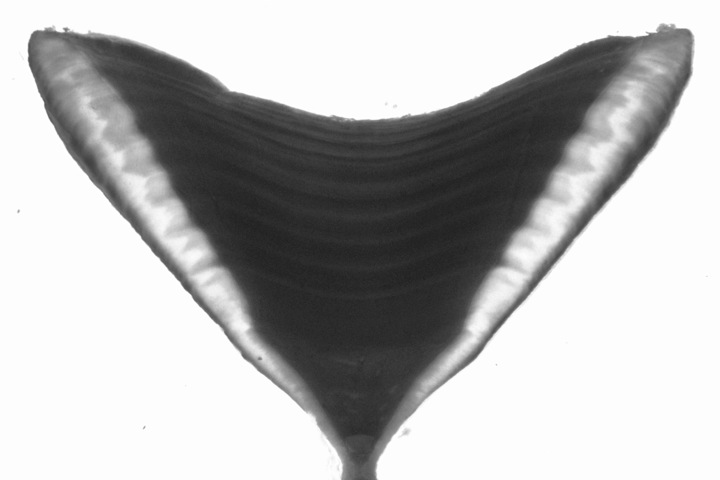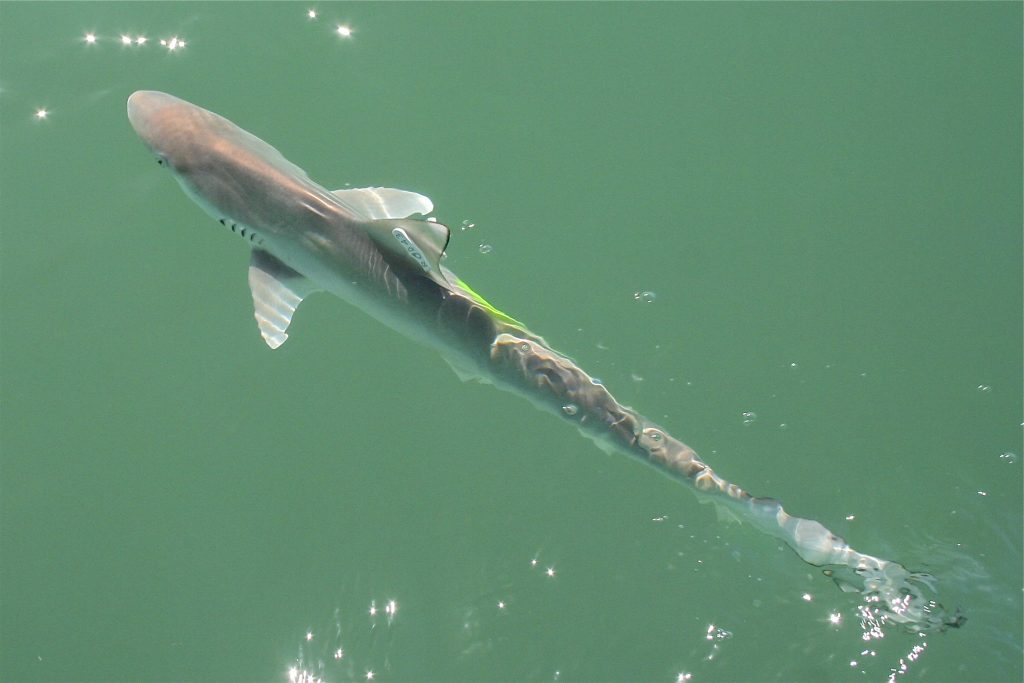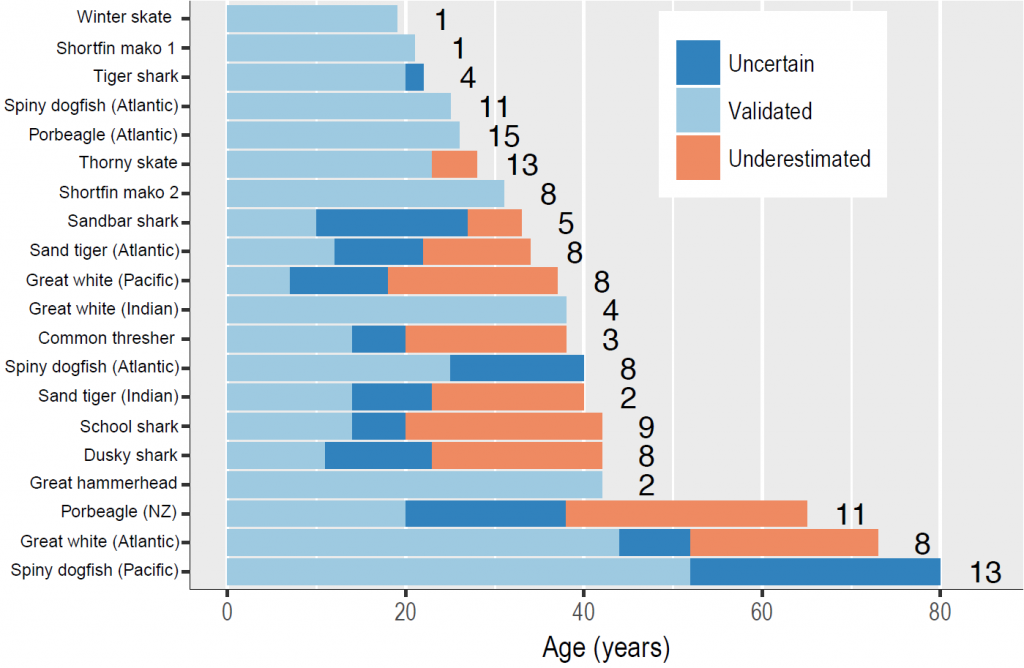 Alastair Harry is a fisheries science practitioner based in Perth, Australia. He assists in implementing ecosystem based fisheries management to support the sustainable use of wild-capture fish resources. He is a generalist and works across multiple areas including stock assessment, bycatch, and threatened species. He also holds an adjunct position at James Cook University and has a specific interest in the conservation and sustainable management of sharks and rays.
Alastair Harry is a fisheries science practitioner based in Perth, Australia. He assists in implementing ecosystem based fisheries management to support the sustainable use of wild-capture fish resources. He is a generalist and works across multiple areas including stock assessment, bycatch, and threatened species. He also holds an adjunct position at James Cook University and has a specific interest in the conservation and sustainable management of sharks and rays.
In August I published a review paper entitled Evidence for systemic age underestimation in shark and ray ageing studies. In it I suggest that many sharks and rays live considerably longer than is currently recognised. This increased life expectancy isn’t due to medical advancements or a more nutritious diet (or even better fisheries management), but rather the result of ageing error.
Ageing of fish, including sharks, underpins much of modern fisheries science and conservation and has important applications in other areas. It is also a field that ranks very high on the list of mundane research topics since it involves a seemingly endless amount of highly repetitive lab work and includes very long periods of time squinting through a microscope. That said, I’m very happy that this paper is getting a bit more attention than usual, especially since it is potentially relevant to an entire class of vertebrates. The following paragraphs provide a bit of context for why I did the study and explain why I believe it is important.
How are sharks aged?
The most common way to age fish, including sharks, is by counting growth rings laid down on calcified parts of their body, in the same way as growth rings are counted on a tree. In bony fishes the ear bones (otoliths) are most commonly used and are excellent at recording age. Cartilaginous (i.e. non-bony) fishes, which includes sharks, rays, skates, and chimaeras, lack these ear bones. In their absence, their vertebrae are most often used for ageing. Regardless of what is used, the principles are similar. Typically a thin section is taken through the vertebrae\otolith\whatever, and growth rings on it are counted under a microscope.

Why age fish?
How long a species lives and how fast it grows will ultimately guide decisions on how it is managed. Fish ages inform management in a general sense, providing a picture of how vulnerable a species is and shaping the rules and regulations for catching it. Fish ages are also used in quantitative fisheries modelling to forecast population sizes and set catch levels. Routing monitoring of ages can, for example, confirm whether there are sufficient numbers of old fish in a population, and hence whether fishing is occurring at desirable levels. To give an idea of the scale of this routine ageing, during 1999 it was estimated that around two million fish were likely aged using their otoliths.
How is age confirmed?
The key assumption of fish ageing is that growth rings are actually reliable indicators of age. This is where things begin to get messy, especially for sharks. During the early days of shark ageing, a big emphasis was placed on validating growth rings. Scientists have tried their best to do this, but the reality is that with traditional methods it is near impossible (at least fiscally) to convincingly confirm age in wild populations of sharks.
Consider one of the best methods for confirming age. Fluorescent chemicals are injected into captured sharks. These bind to calcium in the skeleton, and provide a time-stamp of when the shark was caught. If, by a very slim chance, a chemically-marked shark is recaptured, usually by fishers or researchers themselves, this time stamp can be used to confirm whether the expected number of growth rings formed since it was first captured. This is simple enough conceptually, but for long-lived species like sharks such a study takes decades to do properly and is extremely expensive.

Notwithstanding these difficulties, knowing the age of sharks is sufficiently important that the discipline pressed on. Much of the initial work done to confirm growth rings was lab-based and not necessarily applicable to wild populations, or focussed on juvenile ages classes that are abundant and often easiest to work with. In most cases these studies confirmed that growth rings did indeed correspond to age. Over time it became accepted that growth rings on vertebrae gave a valid indication of lifespan even though there were very few studies that looked at the whole lifespan of a species.
Irregularities started to appear relatively quickly, however. As early as 1993, a lab-based study on Little Skates suggested that growth rings stopped forming in pregnant females possibly because they diverted their energy away from growth and into reproduction. In southern Australian waters, School Sharks had been aged to 20 years by counting growth rings in their vertebrae, however tagging showed they lived much longer. One tagged shark was even recaptured after a remarkable 42 years!
Bomb carbon dating – the game changer
During the late 1990s a new technique emerged that revolutionized shark ageing. Bomb carbon dating involves measuring levels of carbon radioisotopes extracted from growth rings. Testing of nuclear bombs during the 1950s and 60s led to a rapid spike in radiocarbon in the earth’s atmosphere. This radiocarbon made its way into the oceans and up the food chain, enabling it to be used as a timestamp. With bomb carbon dating it became possible to provide a very compelling validation of the growth rings in sharks, something that had previously been done in an extremely small number of species. Initial published studies on Spiny Dogfish and Porbeagle Sharks confirmed that the growth rings being counted were accurate.
Something is not quite right here
Despite the initially encouraging results of some early studies, the very first bomb carbon dating of sharks in fact gave contradictory results. This study was done on School Shark off southern Australia and confirmed that many individuals were far older than the number of growth rings on their vertebrae, corroborating previous tagging studies. Unfortunately, this work was never formally published and went largely unnoticed for several years.
It was not until 2007 that the first hard evidence of shark ages being underestimated came to light when a group of researchers attempted to use bomb carbon dating to confirm the age of Porbeagle sharks off New Zealand. Remarkably, New Zealand Porbeagles were found to live to at least 65 years old, far older than their counterparts in the north Atlantic. Some individuals were also found to be more than double the age that growth rings on their vertebrae suggested. In the decade since that study, there has been a slow but steady trickle of similar evidence affecting species such as Sand Tiger, Great White and Dusky Sharks. Most of this evidence has come from bomb carbon dating, but additional evidence has come from tagging and chemical marking studies.
In my study, I reviewed every bomb carbon dating and chemical marking study done to confirm age in sharks and rays. For the 53 populations that had been studied using these methods. I found that 30% of all studies showed evidence that age was underestimated. This included half of the bomb carbon dating studies where age was underestimated by an average of 20 years. I also found a very clear pattern across studies; growth bands were accurate in younger sharks, but underestimated the age of older sharks. This may be because growth rings stop forming in older sharks, or because they become too difficult to count. I argue that available evidence suggests this problem is likely to be systemic and not just an isolated to a few species.

The problem of age underestimation in sharks is not unique and similar issues have been reported in fish, although usually in isolated cases. A well-known case is the Orange Roughy, a prized deep-sea fish. Initial ageing studies concluded that it was moderately long-lived (~30 years) and large fisheries developed that rapidly overfished stocks, especially in Australia where it was briefly the nation’s most valuable species. It was later discovered that Orange Roughy live to over 100 years, and can only support low levels of fishing. Stocks in Australian waters are only now beginning to recover after a long-period that has included complete fishery closures. This, in a nutshell, highlights the dangers of getting age wrong; there can be real and long-term environmental and economic impacts.
Where to from here?
The findings of this research could have important implications for how sharks and rays are managed, but understanding exactly what they mean is not necessarily straightforward and requires further research. As emphasized by the case of Orange Roughy, longer-lived and slower growing species are generally less resilient to fishing. This would necessitate a more cautious approach to managing shark stocks, for example setting lower catch levels or applying more stringent rules for bycatch species.
But age underestimation may also bias fishery models in unforeseen and sometimes counterintuitive ways. Take the example of the Sand Tiger Shark. Females begin reproducing around 10 years of age, and had been aged to around 20 years based on their vertebrae. This species gives birth to two large pups after a two-year reproductive cycle, which would imply they only reproduce about five or six times over the course of their lifetime. However, a bomb carbon dating study showed they actually live to at least 40 years of age. This implies they would have many more opportunities to reproduce, and that populations could be comprised of relatively more mature females than currently realised, which would be good news.
Unfortunately, shark ageing is an area where we still know remarkably little. For example, the graph above includes every bomb carbon dating study done on sharks and rays up to 2016. A grand total of 22 populations had been studied, and in several cases only a single individual was aged. To put that into context, there are around 1100 species of sharks and rays! This isn’t the only evidence we have to confirm ages, but there is still a huge need for further research.
Finally, it’s worth stating that age underestimation shouldn’t be viewed as an oversight, but rather an inevitable part of the scientific process. Scientists have always been acutely aware of the need to test the hypothesis that growth rings correspond to age. Due to the nature of shark populations, the funding environment, and advances in the field, this evidence has taken a long time to accumulate. In fact, it is only due to the meticulous bomb carbon dating and persistent long-term tagging conducted by a relatively small group of researchers that my study was possible. The reality is that wild populations of sharks are extremely difficult to work with and conduct experiments on, hence why scientists prefer to use mice and fruit flies as ‘model’ species, not elusive and endangered 2-tonne great white sharks!
The full paper can be found here
Feel free to contact me at Alastair DOT Harry AT Gmail DOT com with any questions!